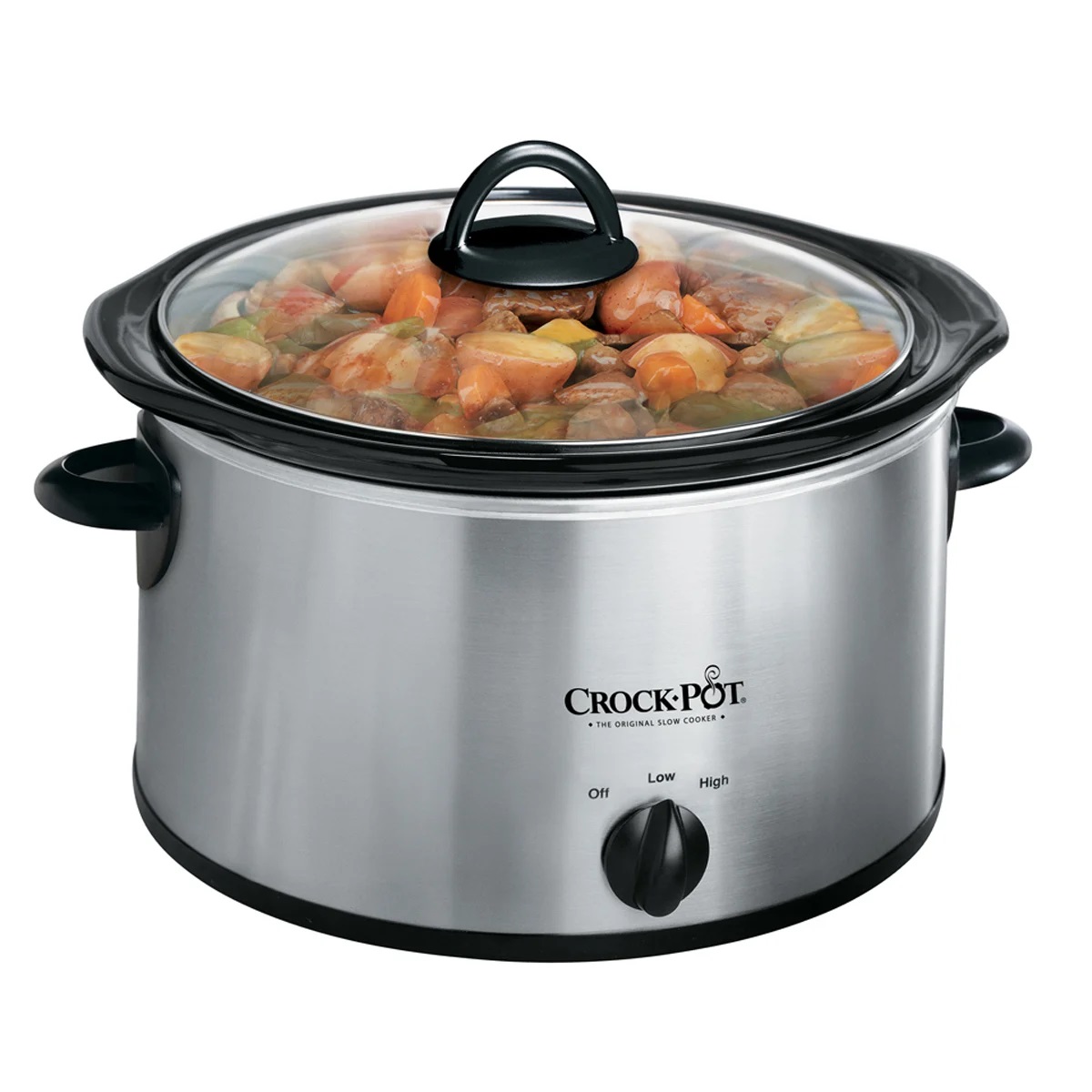

Articles
How To Thicken A Stew In A Slow Cooker
Modified: January 6, 2024
Discover effective techniques on how to thicken your stew in a slow cooker with our insightful articles. Enhance your cooking skills and create hearty, flavorful meals.
(Many of the links in this article redirect to a specific reviewed product. Your purchase of these products through affiliate links helps to generate commission for Storables.com, at no extra cost. Learn more)
Introduction
Welcome to the world of slow cooking, where savory stews simmer for hours, filling our homes with tantalizing aromas and promising delicious meals. A slow cooker, also known as a crockpot, is a versatile kitchen appliance that allows us to create mouthwatering dishes with minimal effort. One common challenge faced by many home cooks is how to achieve the perfect thickness in their slow cooker stews. In this article, we will explore various methods to thicken a stew in a slow cooker, ensuring that your meals are not only flavorful but also have that desired hearty consistency.
Thickening stew is essential for enhancing its rich texture and flavor. A thickened stew coats the ingredients, creating a luxurious mouthfeel that elevates the overall dining experience. Whether you prefer a thick and creamy stew or a slightly thickened broth, mastering the art of thickening can take your slow cooker creations to the next level.
Before diving into the different methods of thickening your stew, let’s briefly touch upon the slow cooker itself. The slow cooker is an indispensable tool for those who want to savor delicious meals without spending hours in the kitchen. This appliance uses low heat over an extended period, allowing flavors to meld and ingredients to tenderize slowly. The result? Irresistibly tender meat, perfectly cooked vegetables, and incredible depth of flavor. With a little planning, you can set your slow cooker in the morning and return home to a sumptuous, ready-to-eat meal.
Key Takeaways:
- Master the art of thickening slow cooker stews using cornstarch, flour, roux, or potatoes to create luxurious mouthfeel, intensified flavors, and visually appealing dishes.
- Experiment with different thickening agents and methods, adjust liquid levels, and be patient to achieve the perfect consistency for your slow cooker stews.
Read more: How To Thicken Up Chili In A Slow Cooker
Understanding the Slow Cooker
Before we delve into the different methods of thickening stew in a slow cooker, it’s essential to have a good understanding of how this appliance works. A slow cooker consists of a removable ceramic or metal pot, surrounded by a heating element. The pot sits within a housing unit, which houses the heating element.
The slow cooker operates by creating a consistent low temperature over an extended period. The heating element slowly cooks the ingredients in the pot, allowing flavors to meld and develop over time. The tight-fitting lid ensures that moisture is retained, preventing evaporation and maintaining a moist cooking environment.
One of the key advantages of slow cooking is the convenience it offers. The long, slow cooking process requires minimal attention and supervision. This makes it ideal for busy individuals or anyone looking to simplify meal preparation.
Slow cookers are incredibly versatile and can be used to prepare a wide range of dishes, from soups and stews to roasts and even desserts. However, due to the nature of slow cooking, it’s crucial to consider certain factors when using a slow cooker to thicken stew.
Here are a few things to keep in mind:
- Cooking Time: Slow cookers operate at a low temperature, which means it takes longer for ingredients to cook. This influences the time it takes for a stew to thicken naturally. If you’re working with a time constraint, using thickening agents can expedite the process.
- Moisture Content: Slow cooker recipes often include liquid to ensure the ingredients cook evenly and don’t dry out. This can affect the thickness of the stew. If you find that your stew has too much liquid, we will explore different methods to thicken it without compromising flavor.
- Consistency Preference: Everyone has their own preference when it comes to the thickness of stew. Some prefer a thicker, creamier texture, while others prefer a lighter, brothy consistency. Understanding your preferred consistency will help you achieve the desired results.
Now that you have a grasp of how slow cookers work and the factors to consider, let’s dive into the methods of thickening stew in a slow cooker.
Importance of Thickening Stew
Thickening stew is not just about creating a visually appealing dish; it also plays a significant role in enhancing the overall flavor and texture. Let’s explore the importance of achieving the perfect thickness in your slow cooker stews.
Improved Texture: Thickening stew adds body and substance to the dish, creating a more satisfying eating experience. It coats the ingredients, allowing the flavors to mingle and intensify as they meld together. The thickened sauce or broth clings to the meat, vegetables, and other ingredients, ensuring that each bite is packed with delicious flavors.
Enhanced Flavor: When a stew thickens, it concentrates the flavors and intensifies the taste. As the liquid reduces, the natural sugars in the ingredients become more pronounced, resulting in a deeper, richer flavor profile. The thickened sauce or broth acts as a canvas, capturing and enhancing the aromatic spices, herbs, and seasonings used in the recipe.
Mouthfeel and Satisfaction: A well-thickened stew creates a luxurious mouthfeel that is incredibly satisfying. The added viscosity gives the stew a hearty and comforting feel, making it more substantial and filling. It adds a certain level of indulgence to the dish, elevating it from a simple soup to a robust and satisfying meal.
Improved Presentation: A thickened stew not only looks more visually appealing, but it also holds its shape better when served. The ingredients showcase their flavors and textures more prominently when coated in a thickened sauce or broth. This makes your slow cooker stew more enticing and appetizing, especially when presenting it to guests or loved ones.
Better Sauce Consistency: Thickening the stew helps achieve the desired sauce consistency. Some recipes call for a thick and velvety sauce, while others may require a lighter broth-like consistency. By controlling the thickness of the stew, you can ensure that it matches your specific recipe and personal preference.
Overall, thickening stew in a slow cooker is essential for creating a satisfying and flavorful dish that is visually appealing. It adds body, enhances the taste, and creates a luxurious mouthfeel. Now, let’s explore some common ingredients and methods used to thicken stews in a slow cooker.
Common Ingredients for Thickening
When it comes to thickening your slow cooker stew, there are several common ingredients you can use to achieve the desired consistency. These ingredients not only help thicken the stew but also add flavor and texture. Let’s take a look at some of the commonly used ingredients:
- Cornstarch: Cornstarch is a popular thickening agent and works well in slow cooker stews. It’s a fine white powder derived from corn and has a neutral taste. When added to a stew, it helps thicken the liquid and gives it a smooth, silky texture. Cornstarch is best added towards the end of the cooking process, as it requires a short cooking time to reach its full thickening potential.
- Flour: Flour is another commonly used ingredient for thickening stews. It works by absorbing the liquid in the stew and swelling, creating a thickened sauce. All-purpose flour is the most common type used, but you can also use other flours like rice flour or cornmeal, depending on your dietary needs or preferences. Flour is typically combined with fat to create a roux before being added to the stew.
- Roux: A roux is a mixture of equal parts fat (usually butter) and flour. This thickening method is common in dishes like gumbo and jambalaya. To make a roux, you melt the butter in a separate pan, then gradually whisk in the flour until you have a smooth paste. The roux is then added to the stew, where it helps thicken the liquid and adds flavor.
- Potato: Potatoes are a natural thickening agent that adds starchy goodness to slow cooker stews. As they cook, potatoes release their starch, which helps thicken the surrounding liquid. You can either dice the potatoes and incorporate them into the stew or mash them at the end to create a thicker consistency. Potatoes also add a subtle sweetness and velvety texture to the stew.
- Beans and Legumes: Beans and legumes, such as lentils or chickpeas, can be used to thicken slow cooker stews while adding a boost of protein and fiber. As these ingredients cook, they break down and release their natural starches, which contribute to the thickening process. They also add a hearty and hearty texture to the stew.
These ingredients are readily available and can be easily incorporated into your slow cooker stews to achieve the desired thickness. Depending on your dietary preferences and the flavor profile of your stew, you can choose the most suitable thickening ingredient. Now, let’s explore various methods of thickening your stew using these common ingredients.
Method 1: Using Cornstarch
Cornstarch is a versatile thickening agent that is commonly used in cooking and baking. It is particularly effective in thickening slow cooker stews, providing a smooth and silky consistency. Here’s how you can use cornstarch to thicken your stew:
- Start by mixing cornstarch with a small amount of cold water in a separate bowl. The general rule of thumb is to use 1 tablespoon of cornstarch mixed with 1 tablespoon of water for every cup of liquid in your stew.
- Whisk the cornstarch and water mixture until it is smooth and free of lumps.
- Add the cornstarch mixture to your slow cooker stew, stirring well to ensure it is evenly distributed.
- Continue cooking the stew for an additional 15-30 minutes to allow the cornstarch to thicken the liquid. Be careful not to overcook, as the starch can begin to break down and lose its thickening properties.
- If the stew has not thickened to your desired consistency, you can repeat the process by mixing additional cornstarch with water and adding it gradually to the stew.
- Remember to taste and adjust the seasoning of the stew if necessary, as the addition of cornstarch may dilute the flavors slightly.
Using cornstarch as a thickening agent is a quick and easy method that yields excellent results. It provides a glossy texture to the stew without altering the flavors significantly. Just ensure that you add the cornstarch towards the end of the cooking process to prevent it from losing its thickening properties.
Now that you’ve learned how to use cornstarch to thicken your slow cooker stew, let’s explore another common method using flour.
Add a slurry of cornstarch and water or flour and water to the slow cooker 30 minutes before serving to thicken the stew. Stir well and let it cook until thickened.
Read more: When To Add Mushrooms To Stew In Slow Cooker
Method 2: Using Flour
Flour is a pantry staple that can be used as a thickening agent for slow cooker stews. It adds body and depth to the sauce, resulting in a rich and velvety consistency. Here’s how you can use flour to thicken your stew:
- In a small bowl, mix equal parts flour and water to create a slurry. The amount of flour needed depends on the thickness you desire, but as a general guideline, start with 2 tablespoons of flour and 2 tablespoons of water.
- Whisk the mixture until the flour is fully dissolved, creating a smooth paste.
- Gradually pour the flour slurry into the slow cooker stew, stirring continuously to prevent lumps from forming.
- Continue cooking the stew for an additional 15-30 minutes to allow the flour to thicken the liquid. Stir occasionally to ensure the flour is evenly distributed.
- If the stew has not thickened to your liking, you can repeat the process by creating more flour slurry and adding it gradually until the desired consistency is achieved.
- Keep in mind that flour can take a bit longer to thicken compared to other thickening agents, so be patient and give it enough time to work its magic.
Using flour as a thickening agent provides a rustic and hearty texture to your slow cooker stew. It adds a subtle flavor and helps bind the ingredients together, resulting in a satisfying meal. Remember to adjust the seasoning if needed, as the addition of flour may dilute the flavors slightly.
Now that you have learned how to use flour to thicken your slow cooker stew, let’s explore another method that involves making a roux.
Method 3: Using Roux
Creating a roux is a classic and versatile technique that can be used to thicken slow cooker stews. A roux is a mixture of equal parts fat and flour, which acts as a thickening agent while adding richness and flavor to the dish. Here’s how you can use a roux to thicken your stew:
- In a separate pan, melt butter or any other cooking fat over medium heat.
- Add an equal amount of all-purpose flour to the melted fat, stirring continuously to combine. The ratio is typically 1 tablespoon of butter/fat to 1 tablespoon of flour, but you can adjust the amount based on the desired thickness.
- Continue stirring the mixture over medium heat until it reaches a smooth and uniform consistency. This process helps cook out the raw flour taste.
- Add the roux to your slow cooker stew, stirring well to ensure it is thoroughly mixed in.
- Continue cooking the stew for an additional 15-30 minutes to allow the roux to thicken the liquid. Stir occasionally to prevent sticking or clumping.
- If the stew has not thickened to your desired consistency, you can create more roux by repeating the process and adding it gradually until the desired thickness is achieved.
Using a roux adds a wonderful depth of flavor and a velvety texture to your slow cooker stew. The butter or fat used in the roux enhances the richness of the dish, making it even more satisfying. Adjust the seasoning if needed, as the addition of a roux may slightly alter the flavors of the stew.
Now that you’ve learned how to use a roux to thicken your slow cooker stew, let’s explore another method using a natural thickening agent, potatoes.
Method 4: Using Potato
Potatoes aren’t just a delicious ingredient in stews; they can also serve as a natural thickening agent. Potatoes release their starch as they cook, helping to thicken the liquid and add a creamy texture to your slow cooker stew. Here’s how you can use potatoes to thicken your stew:
- Peel and dice potatoes into small, uniform pieces.
- Add the diced potatoes to your slow cooker along with the other ingredients.
- As the stew cooks, the potatoes will break down and release their starch, naturally thickening the liquid.
- Once the stew is cooked, you can leave the potatoes as they are for a chunkier consistency or use a fork or masher to mash some of the potatoes, creating a thicker consistency.
- Continue cooking the stew for an additional 10-15 minutes to allow the mashed potatoes to blend in and thicken the stew.
- Remember to taste and adjust the seasoning of the stew if needed.
Using potatoes as a thickening agent not only adds body to the stew but also imparts a delicious flavor and creamy texture. It’s a great option for those looking for a natural and gluten-free thickening alternative. Plus, the added starch from the potatoes makes the stew more filling and hearty.
Now that you’ve learned how to use potatoes to thicken your slow cooker stew, let’s explore additional tips to help you achieve the perfect thickness.
Additional Tips for Thickening Stew
Thickening stew in a slow cooker requires some experimentation to achieve the perfect consistency. Here are a few additional tips to keep in mind when thickening your stew:
- Adjust Liquid Levels: If you find that your stew has too much liquid, you can try removing the lid during the last hour of cooking to allow some of the moisture to evaporate, resulting in a thicker stew.
- Cook on High: If you’re pressed for time and need to thicken your stew quickly, you can switch your slow cooker to the high setting for the last hour of cooking. The increased heat will help reduce the liquid and thicken the stew faster.
- Use a Thickening Agent Combination: Feel free to experiment with different thickening agents and combinations to achieve your desired consistency. For example, you can use a combination of cornstarch and flour or a roux and mashed potato method to achieve a richer and thicker texture.
- Use Cold Liquid: When using cornstarch as a thickening agent, it’s important to mix it with cold water before adding it to the stew. This prevents clumping and ensures a smooth texture.
- Refrigerate Overnight: If you find that your stew is still not thick enough, you can refrigerate it overnight. The stew will continue to thicken as it cools and the flavors will further develop, resulting in a more flavorful and hearty meal the next day.
- Keep in Mind the Dish’s Final Consistency: Remember that some stews are traditionally meant to have a thinner or brothy consistency, such as certain soups or curries. It’s essential to consider the desired consistency for a specific dish and adjust accordingly.
- Be Mindful of Seasonings: Adding thickening agents may dilute the flavors slightly, so taste your stew and adjust the seasonings if necessary. Add a pinch of salt, herbs, or spices to enhance the flavors and ensure a well-balanced and delicious final dish.
- Patience is Key: Thickening stew takes time, so be patient and allow the process to unfold. It’s better to add thickening agents gradually and let them work their magic rather than rushing the process and ending up with an over-thickened or clumpy stew.
Remember, practice makes perfect when it comes to thickening stew in a slow cooker. With time and experimentation, you will find the method and combination of ingredients that work best for you and your preferred consistency. Enjoy the process, embrace your creativity, and soon you’ll be serving up delicious and perfectly thickened stews!
Now that you have a repertoire of thickening methods and useful tips, you can confidently create flavorful and thick stews in your slow cooker. Happy cooking!
Conclusion
Congratulations! You have now learned several effective methods for thickening your slow cooker stews. These techniques, whether using cornstarch, flour, roux, or potatoes, will help you achieve the desired consistency and elevate the overall flavor and texture of your dishes.
Thickening your stew is not only about enhancing the presentation but also about creating a more satisfying and flavorful dining experience. A well-thickened stew coats the ingredients, intensifying the taste and providing a luscious mouthfeel. It adds body, depth, and visual appeal to your slow cooker creations.
Remember to choose the right thickening agent based on your preference and dietary needs. Whether you opt for the simplicity of cornstarch, the rustic charm of flour, the richness of a roux, or the natural thickness of potatoes, each method offers its unique contribution to your stew.
Alongside the methods, it’s important to keep in mind additional tips and considerations. Adjusting liquid levels, experimenting with different combinations, and being mindful of seasonings are all factors that can help you fine-tune the thickness of your stew.
Although mastering the art of thickening stew takes practice and experimentation, don’t be afraid to get creative and adapt the techniques to your personal taste. With time and experience, you will become adept at achieving the perfect consistency for every slow cooker stew you create.
So, let your imagination run wild, play with flavors, and confidently thicken your slow cooker stews to suit your preferences. Enjoy the process, embrace your inner chef, and unleash a world of flavorful and thick delights from your slow cooker!
Frequently Asked Questions about How To Thicken A Stew In A Slow Cooker
Was this page helpful?
At Storables.com, we guarantee accurate and reliable information. Our content, validated by Expert Board Contributors, is crafted following stringent Editorial Policies. We're committed to providing you with well-researched, expert-backed insights for all your informational needs.
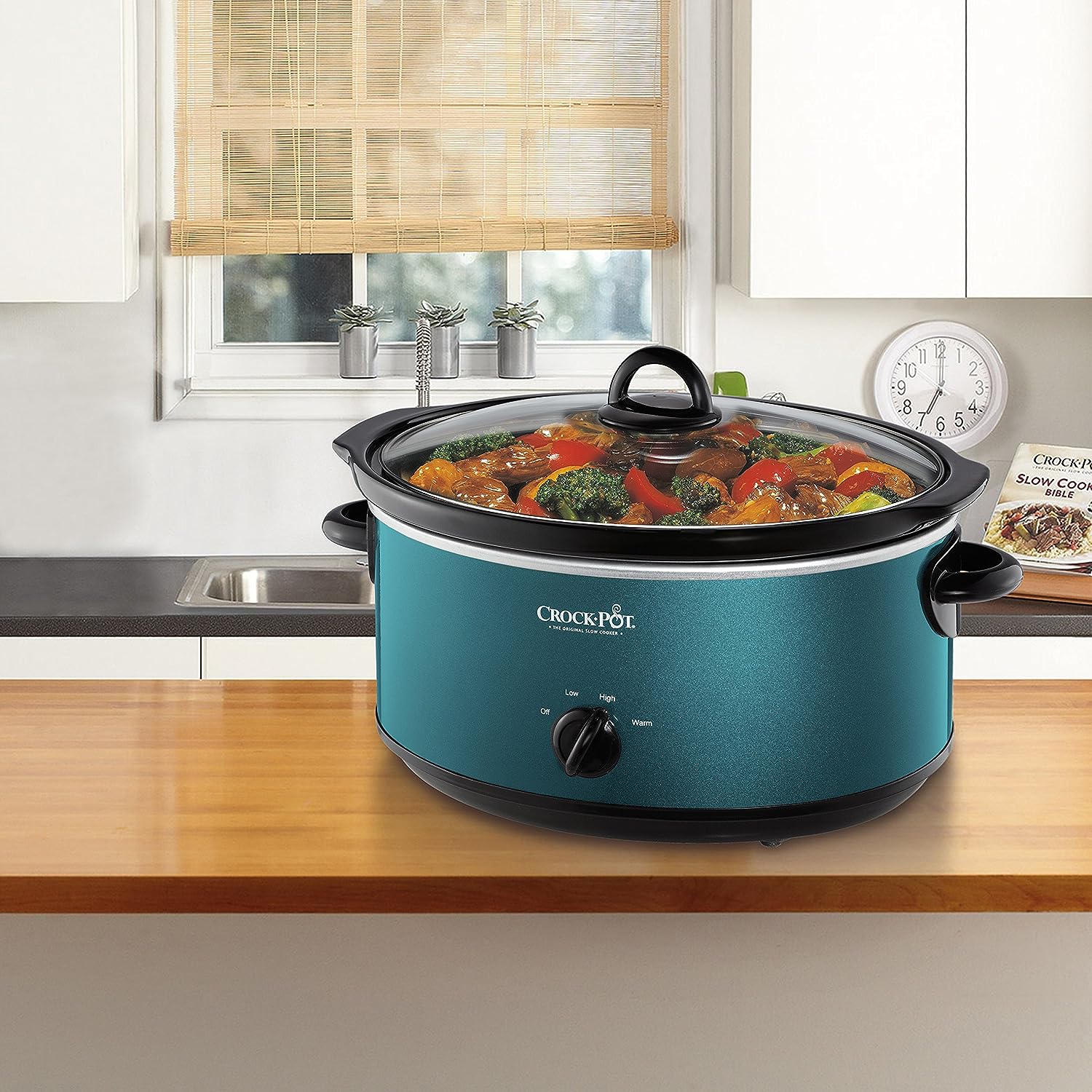
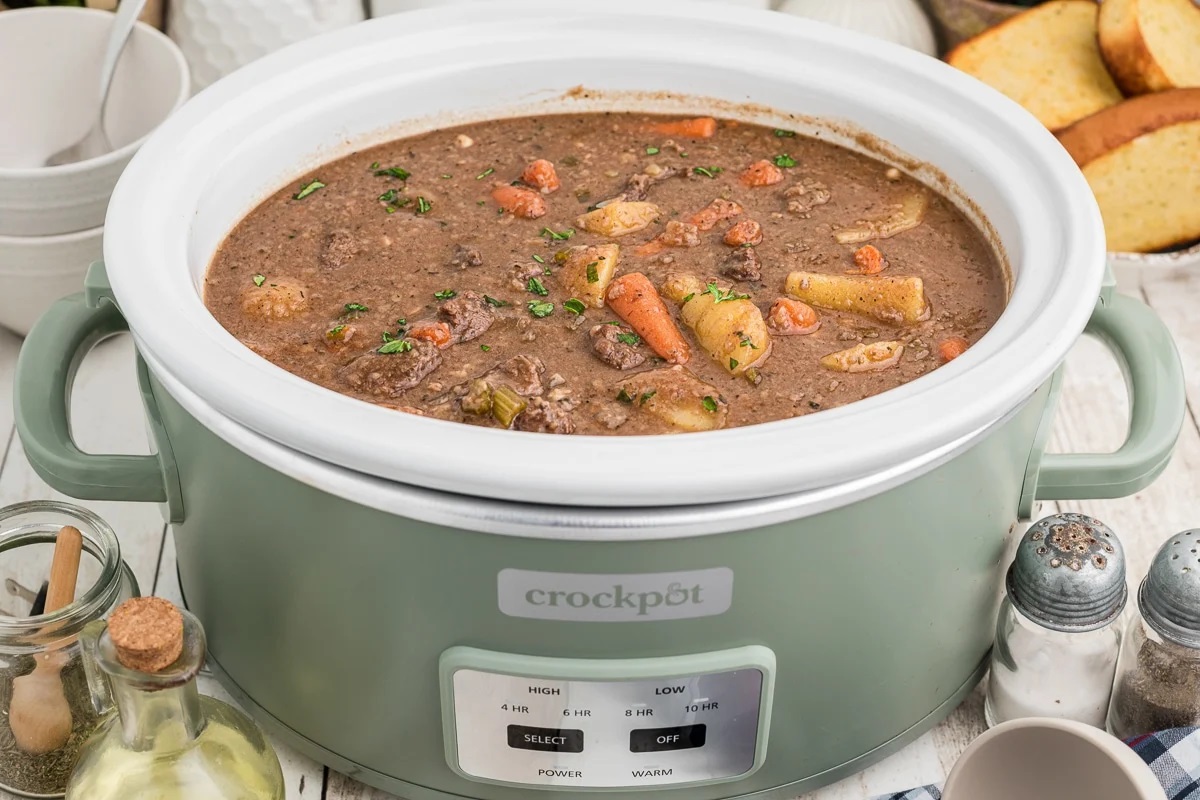
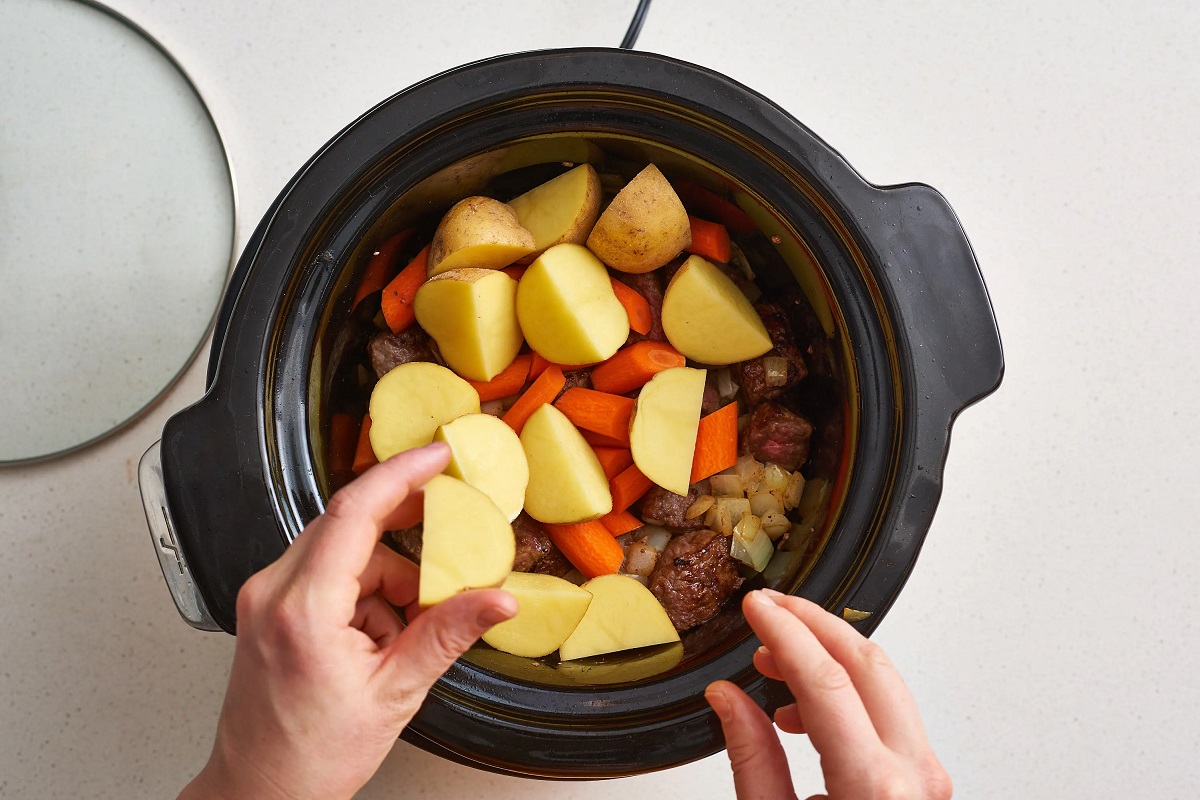
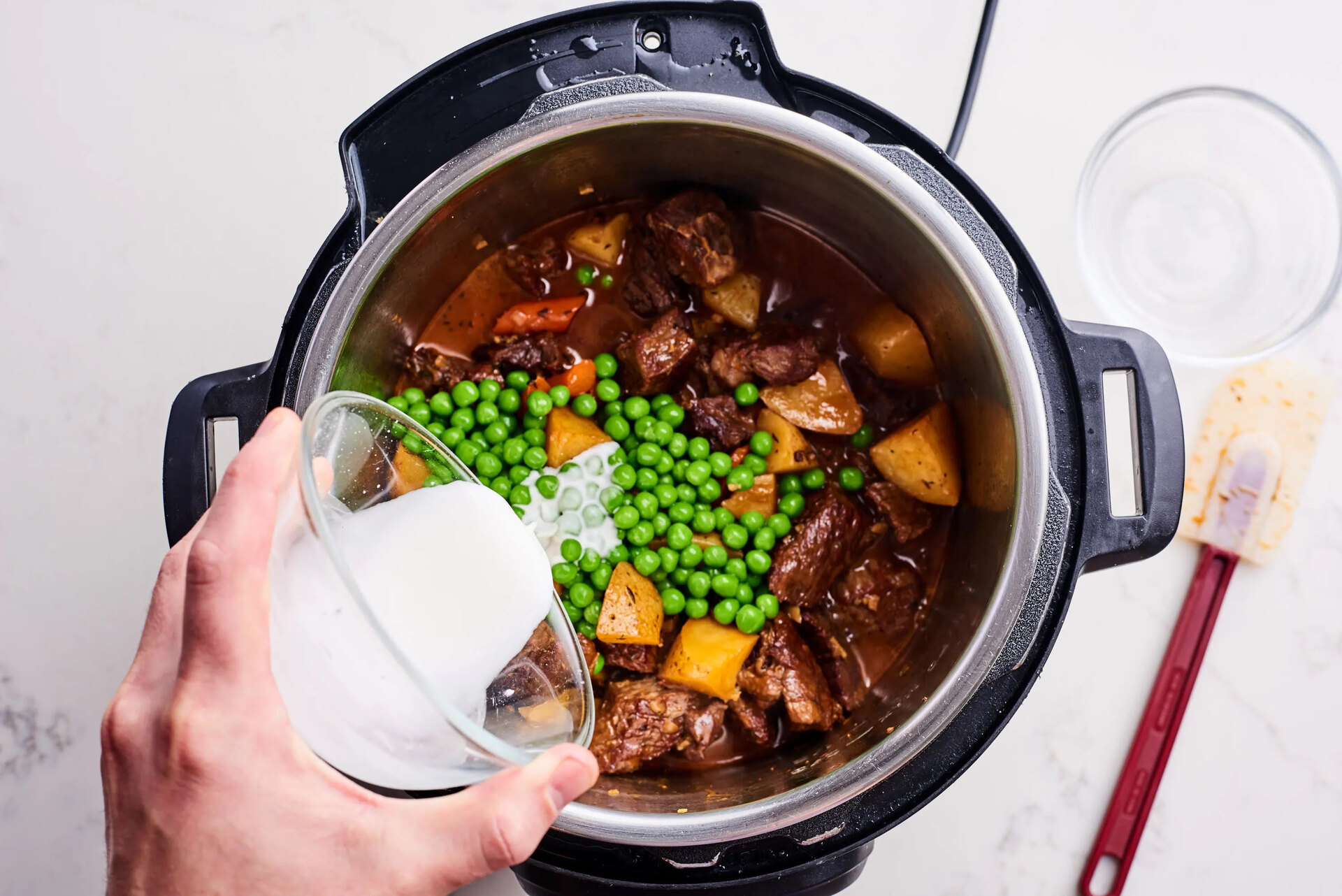
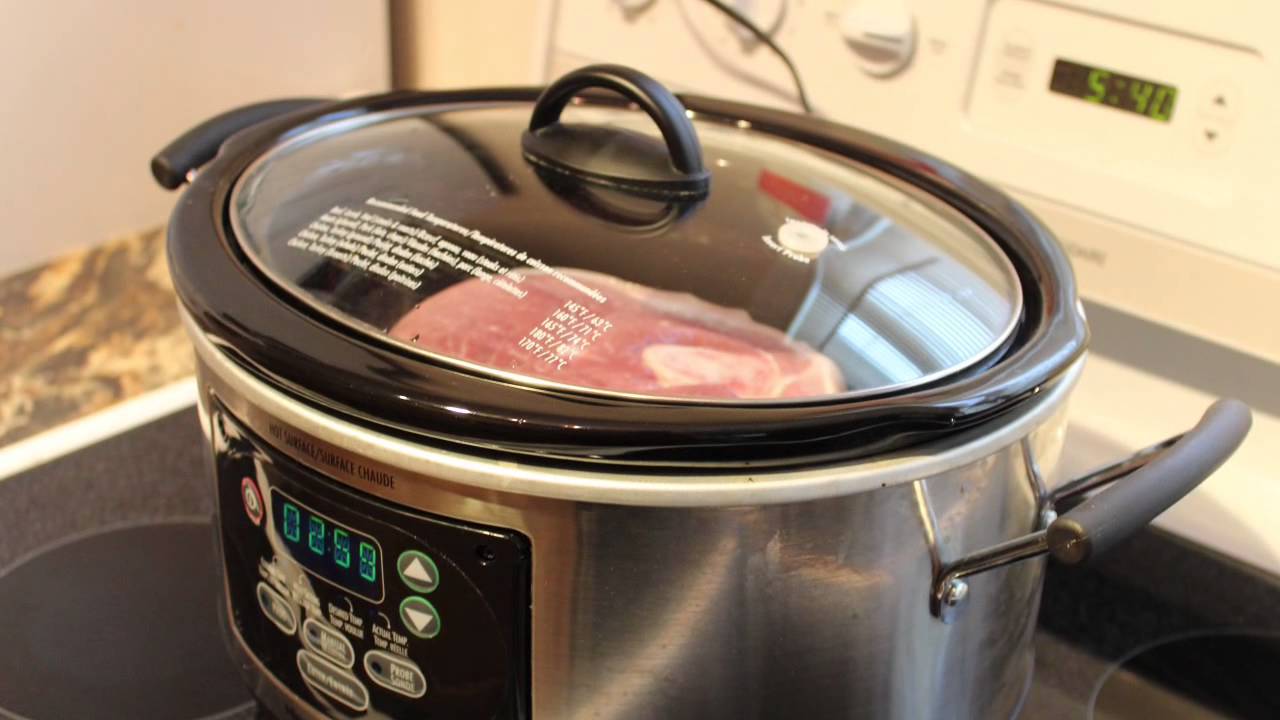
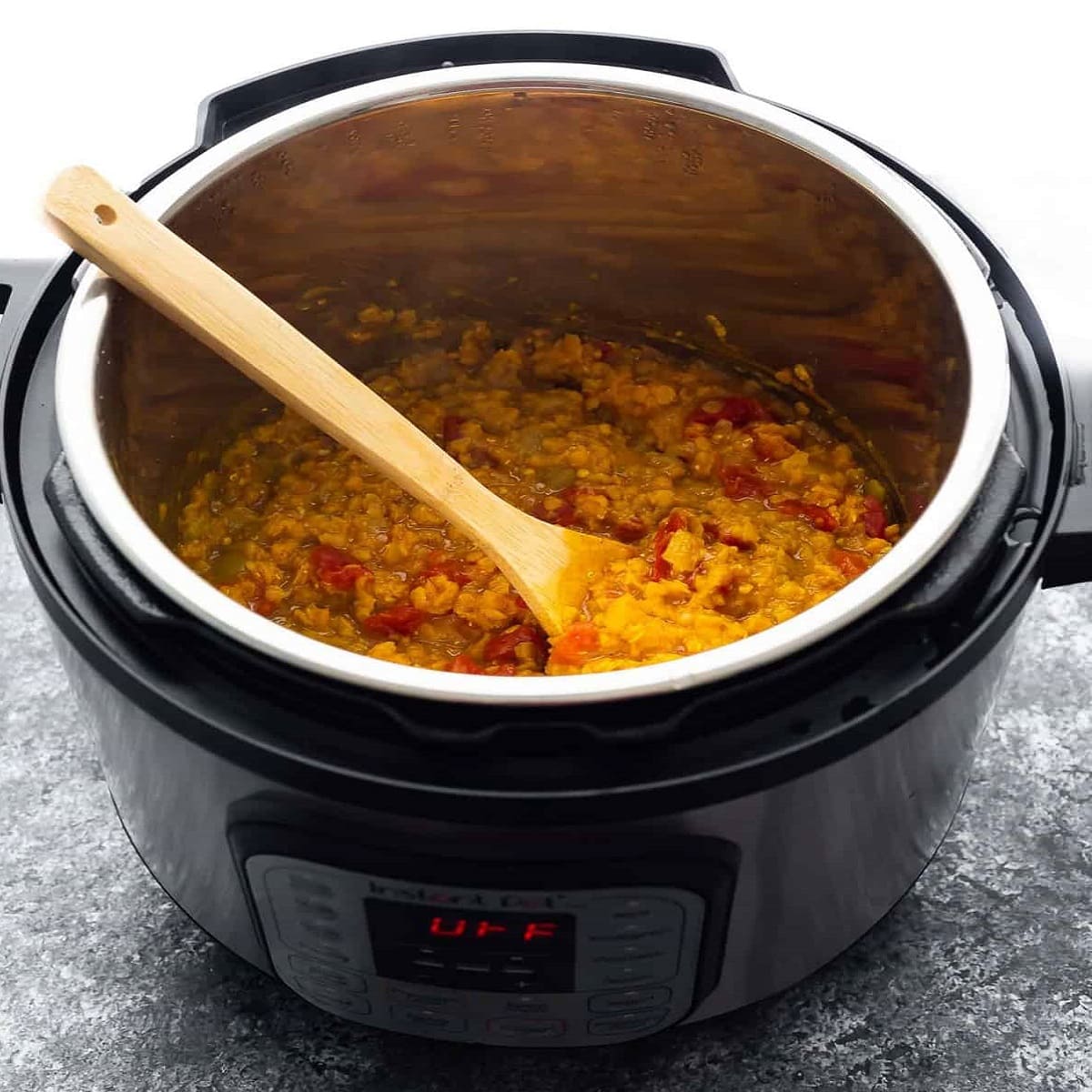


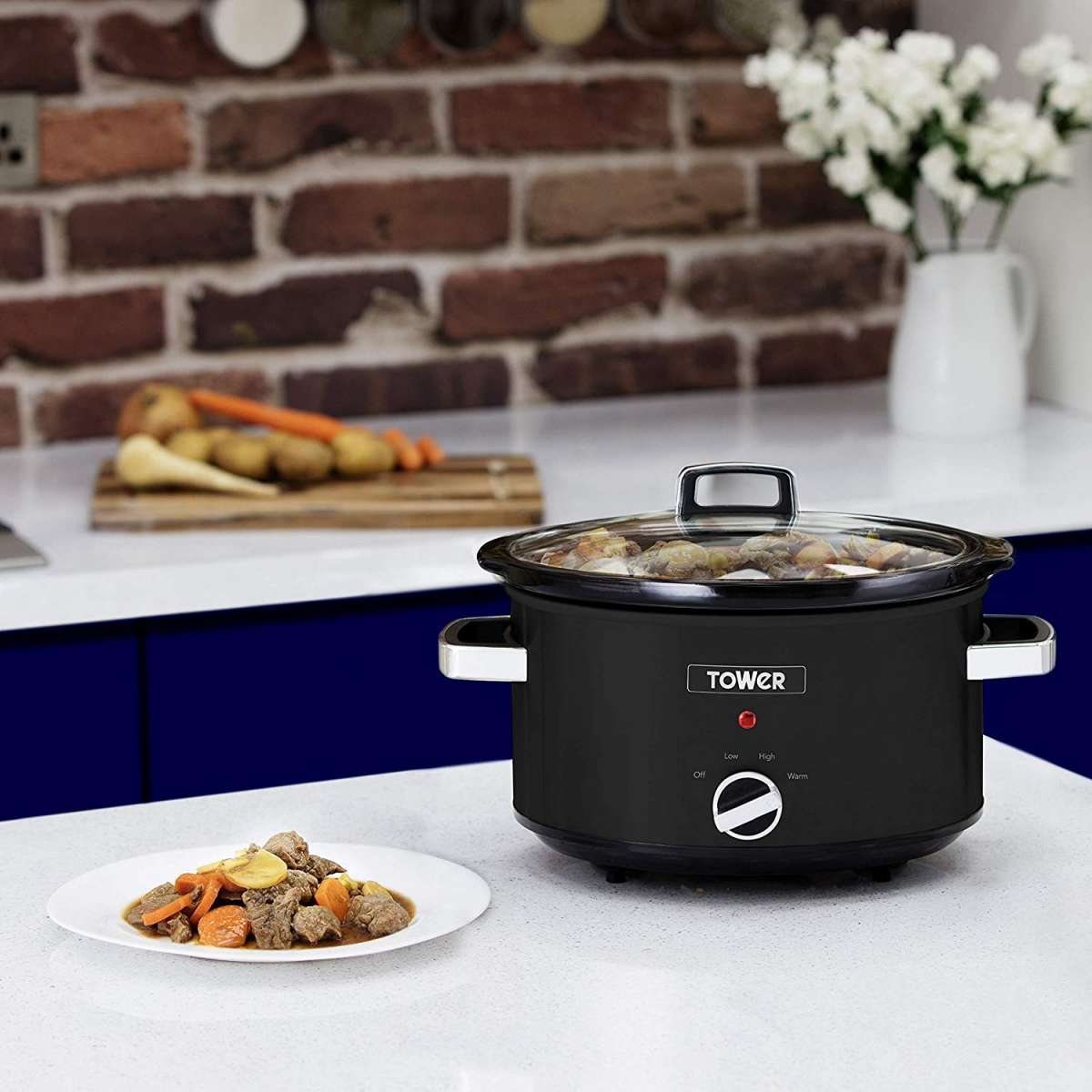

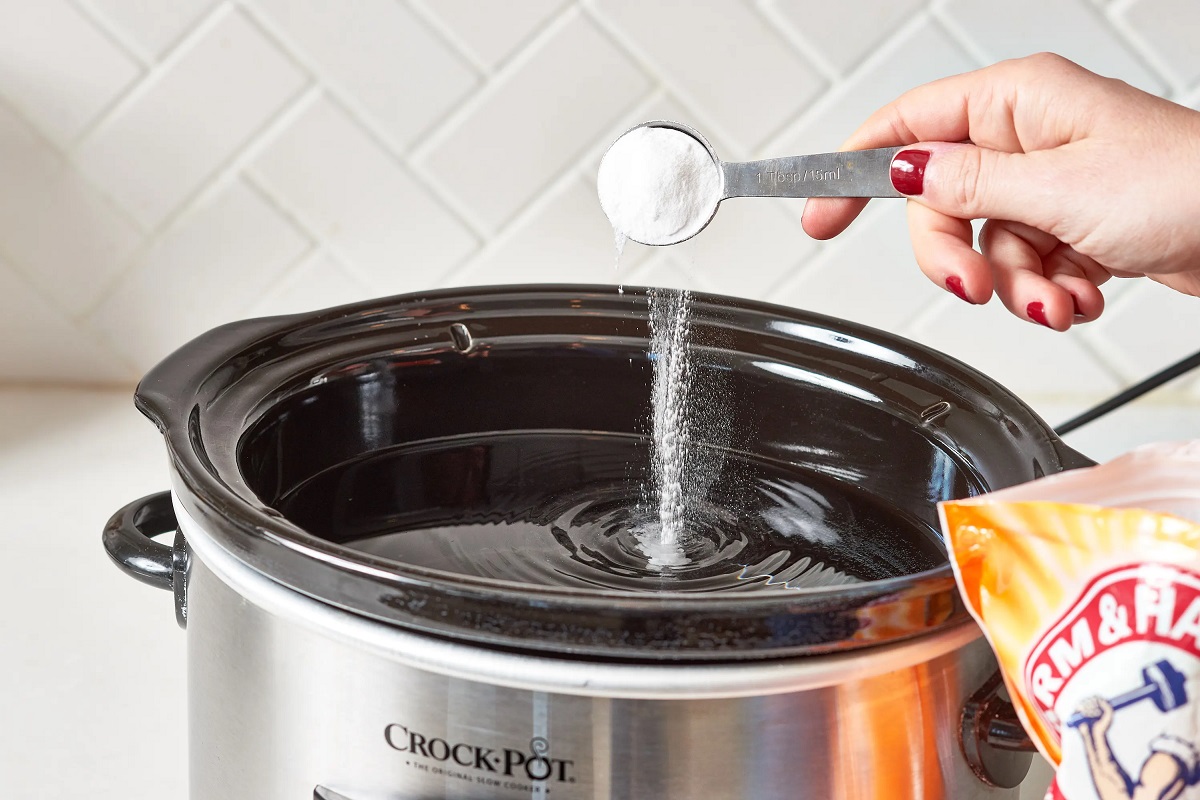
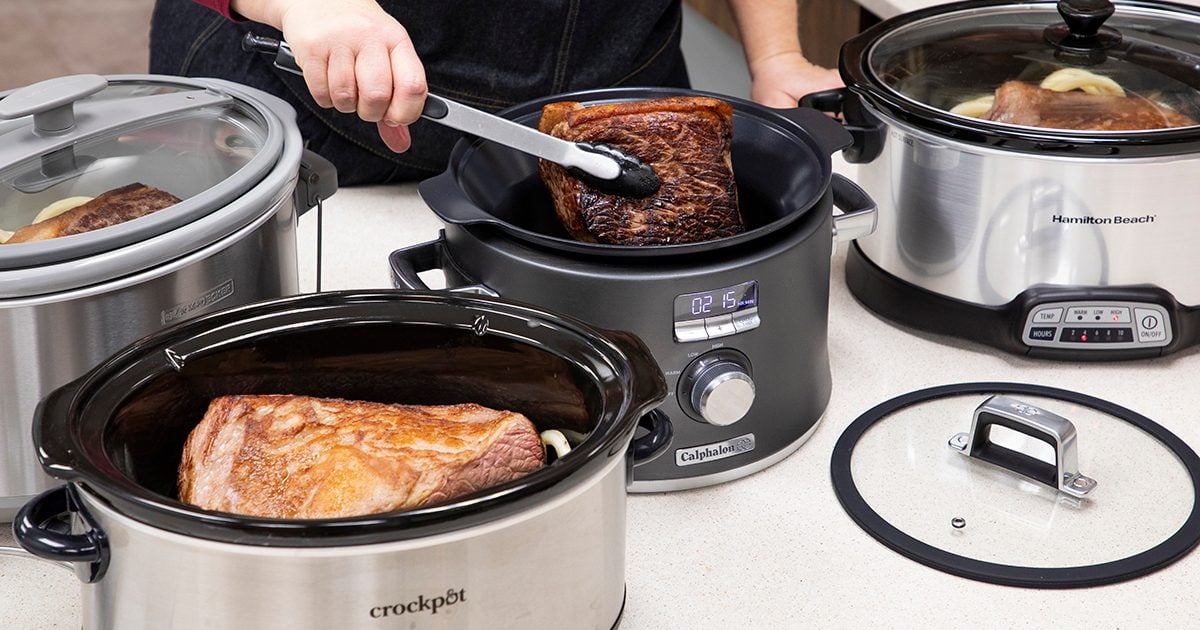
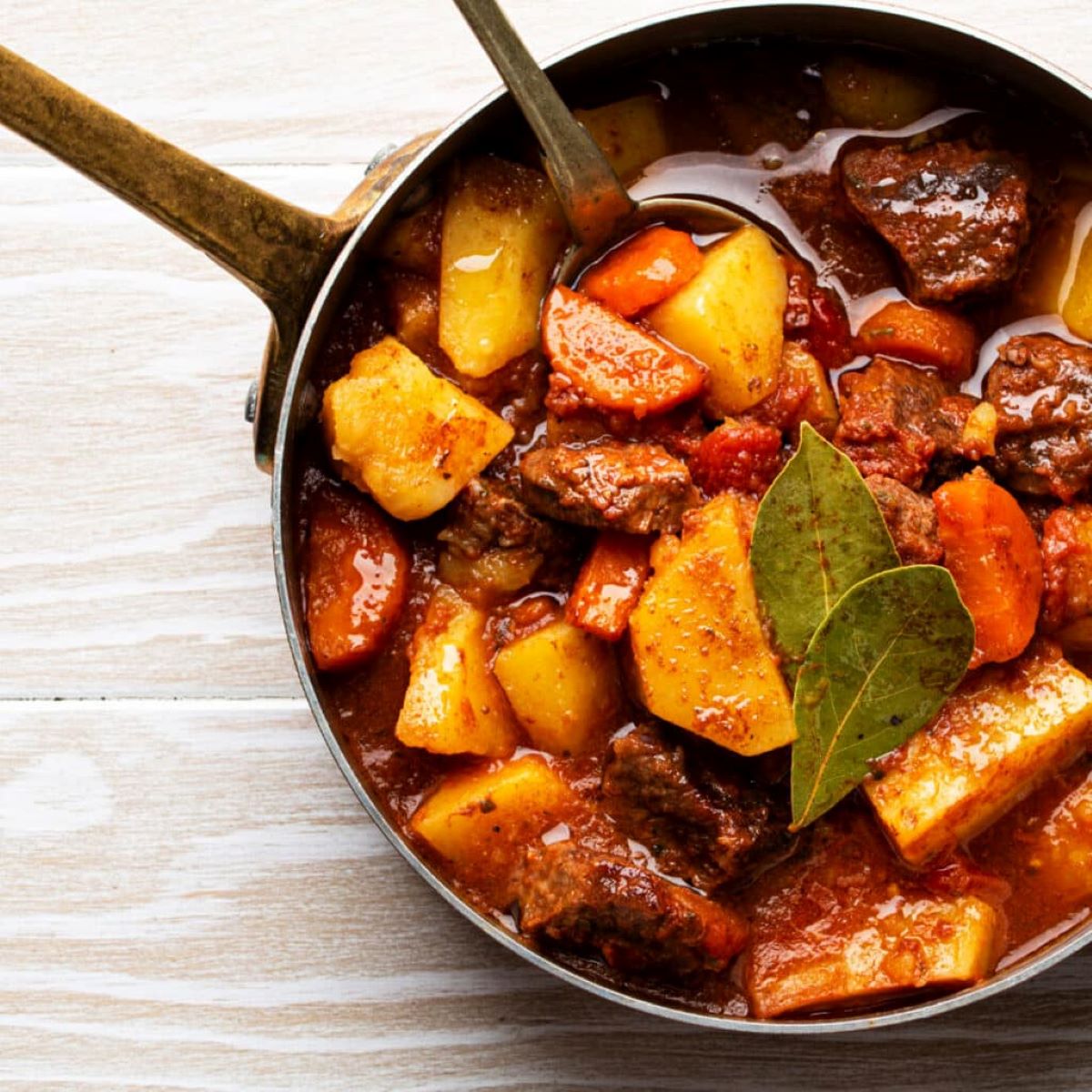

0 thoughts on “How To Thicken A Stew In A Slow Cooker”